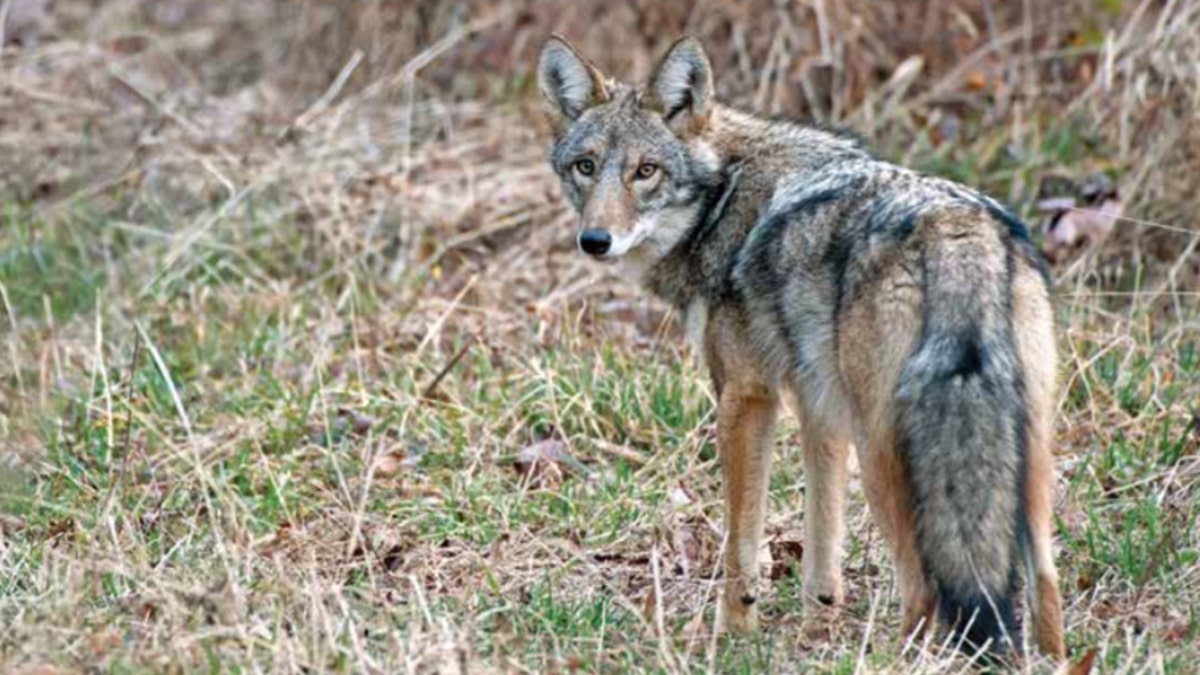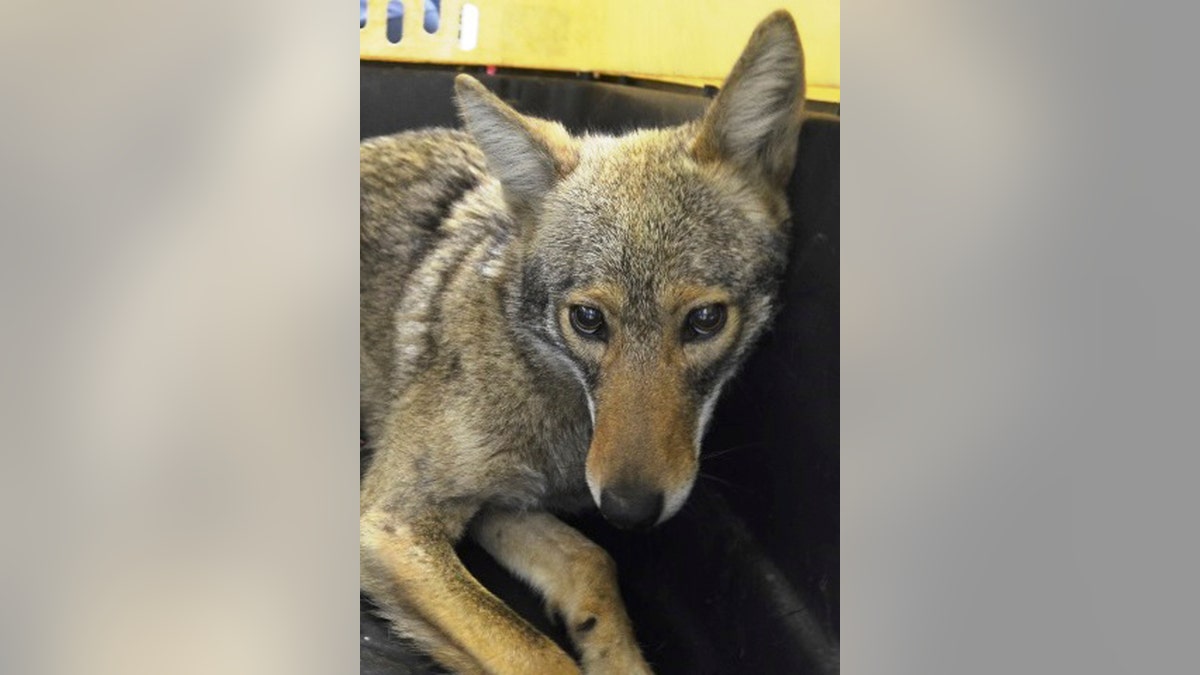
A Coywolf in upstate New York. (Courtesy of Eric Dresser)
A mutant animal has a suburban New York City community on edge, with worries about threats to pets and residents being stalked as authorities try to track down the beasts.
Police in Rockland County are on the hunt for the elusive coywolf -- a hybrid created when a coyote and a wolf mate – and are warning residents to keep their dogs on a leash and their cats indoors “if you are truly concerned with its health.”
“DO chase them away and make noise (bang pots and pans) if you don’t want them in your yard,” police in Clarkstown, N.Y., warned in a Facebook post. “Of course, if you don’t mind them, then watch them from a window quietly so as to not scare them away.”
A local plumber recently shot video footage of a coywolf prowling behind a woman taking out her trash.
“It seemed to be stalking her and kind of followed her back up onto her driveway,” Sean McCormack said, according to the New York Daily News.
The Rockland County coywolf is believed to be one of about 20 living in the New York City area, with most making their home in the Bronx.
When full grown, coywolves, which can travel up to 15 miles a day, can take down an adult deer.They weigh between 30 and 55 pounds.

A coyote is shown after being captured by the New York City Police Department in New York April 25, 2015. The influx of coyotes into urban areas such as New York, Chicago and Los Angeles is a sign of their ability to adapt to environments where they are drawn to abundance of food including mice, squirrels, rabbits and, sometimes, pet cats, said Roland Kays, a zoologist at North Carolina State University who studies wildlife in urban areas. REUTERS/NYPD/Handout FOR EDITORIAL USE ONLY. NOT FOR SALE FOR MARKETING OR ADVERTISING CAMPAIGNS. THIS IMAGE HAS BEEN SUPPLIED BY A THIRD PARTY. IT IS DISTRIBUTED, EXACTLY AS RECEIVED BY REUTERS, AS A SERVICE TO CLIENTS - TM3EB4P12QE01 (Reuters)
Coyotes, by contrast, weigh between 18 and 44 pounds. They were first spotted about 100 years ago in eastern Ontario. Since then, these canines have migrated to the south and west with sightings as far west as Ohio and scientists finding traces of wolf DNA in coyote scat in Virginia.
While an accurate count of how many coywolves are roaming North America is difficult, Roland Kays, a leading coyote biologist with the North Carolina Museum of Natural Sciences, estimates there are likely more than 1 million.
Coywolves are particularly well-adapted to life in the Northeast as the canines have taken up the role of top predator in the region – a position once played by wolves. The beasts are particularly active around New York City and Cape Cod as well as areas with large deer populations such as the woods of upstate New York and Maine.
“We now have a novel, large canine to take over that new role,” Robert Crabtree, chief scientist of the Yellowstone Ecological Research Center, told the Daily Mail. “The right size is going to be selected for us by biological evolution itself.”
Crabtree noted that through evolution the coywolves are becoming more wolf-like and less like their coyote counterparts in the west.
Good news for hungry coywolves. Bad news for deer, sheep, turkeys, dogs and any other animal farther down the food chain.
